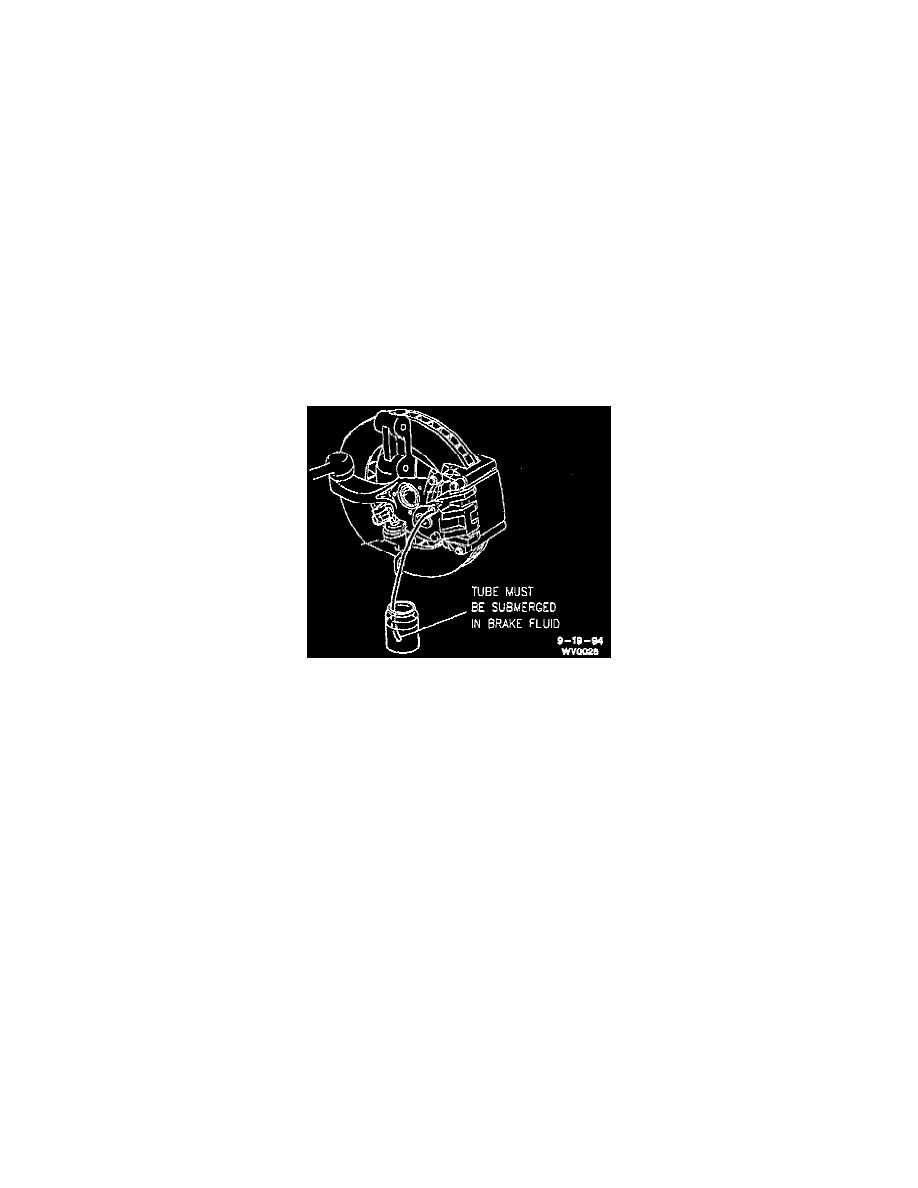Silhouette V6-191 3.1L VIN D TBI (1995)

injury.
^
Use only SUPREME 11 (GM P/N 1052542), or equivalent DOT 3 brake fluid from a clean, sealed container. Do not use fluid from an open
container that may be contaminated with water. Improper or contaminated fluid could result in damage to components, or loss of braking, with
possible personal injury.
^
Overfilling the reservoir must be avoided due to the potential for overflow onto the nearby catalytic converters in the exhaust system. Brake fluid
is flammable, and contact with hot exhaust components could result in a fire and possible personal injury.
CAUTION:
^
If any brake component is repaired or replaced such that air is allowed to enter the brake system, the entire bleeding procedure MUST be
followed.
^
Avoid spilling brake fluid on any of the vehicle's painted surfaces, wiring, cables or electrical connectors. Brake fluid will damage paint and
electrical connections. If any fluid is spilled on the vehicle, immediately flush the area with water to minimize the potential for damage.
NOTE:
^
Prior to bleeding the brakes, the front and rear displacement cylinder pistons must be returned to the top/most position. The preferred method uses
a Scan Tool to perform the rehoming procedure. If a Scan Tool is not available, another procedure may be used, but it is extremely important that
the procedure be followed exactly as outlined. Refer to Bleeding Brakes (Motor Rehome Procedure)
1. Clean brake fluid reservoir cover and surrounding area.
2. Remove brake fluid reservoir cover. Inspect brake fluid level in reservoir and fill to the correct level if necessary.
3. Install brake fluid reservoir cover.
Brake Bleeding
4. Prime ABS brake modulator/master cylinder assembly.
a. Attach a bleeder hose to rearward bleeder valve and submerge opposite hose end in clean container partially filled with clean brake fluid.
b. Slowly open rearward bleeder valve.
c. Depress brake pedal and hold until fluid begins to flow.
d. Close valve and release brake pedal.
e. Repeat Steps (b) through (d) until no air bubbles are present.
f.
Relocate the bleeder hose to the forward brake modulator bleeder valve and repeat Step 4.
g. Tighten ABS brake modulator bleeder valves to 9 Nm (80 inch lbs.).
CAUTION: Once fluid is seen to flow from both modulator bleeder valves, the ABS brake modulator/master cylinder assembly is sufficiently
full of fluid. However, it may not be completely purged of air. At this point move to the wheel brakes and bleed them. This ensures that the
lowest points in the system are completely free of air and then the ABS brake modulator/master cylinder assembly can be purged of any
remaining air.
5. Remove brake fluid reservoir cover.
6. Install brake fluid reservoir cover.
7. Prime the traction Control Module (TCM).
a. Remove TCM bolt to bracket to access bleeder valves.
b. Attach bleeder hose to right side bleeder valve and submerge opposite hose end in clean container partially filled with clean brake fluid.
c. Slowly open the bleeder valve.
d. Depress brake pedal and hold until fluid begins to flow.
e. Close valve and release brake pedal.
f.
Repeat Steps 7B through 7E until no air bubbles are present.
g. Relocate the bleeder hose to the left side bleeder valve and repeat Step 7.
CAUTION: Once fluid is seen to flow from both bleeder valves, the TCM is sufficiently full of fluid. However, it may not be completely
